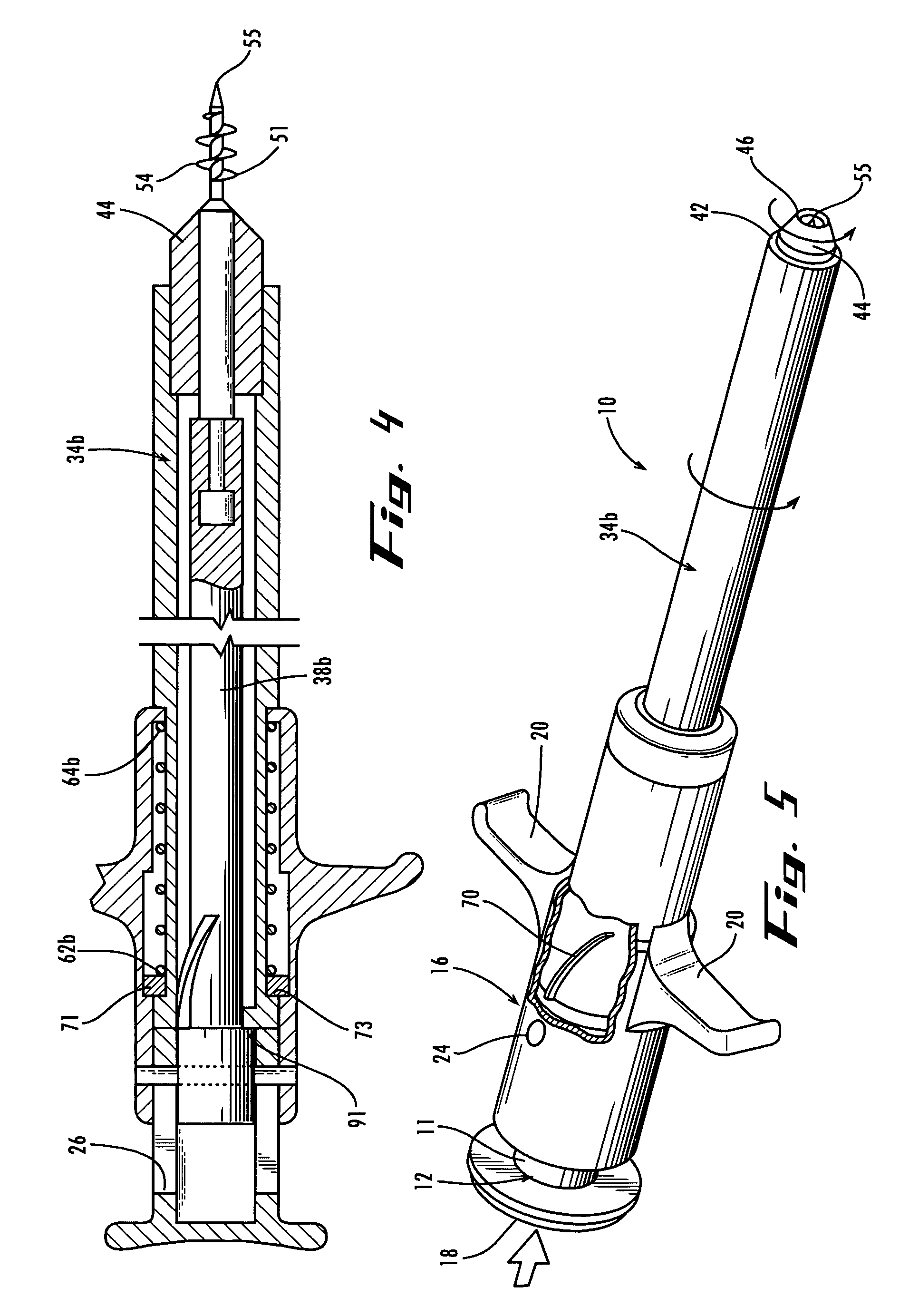Medical punch and surgical procedure
a medical and surgical technology, applied in the field of medical punches, can solve the problems of device jamming with vessel tissue, inconvenient screwing of punches, and inability to clean and accurate the cut thus produced, and achieve the effects of convenient scissor-like shearing action, clean and accurate cut of vessel tissues, and convenient screwing
- Summary
- Abstract
- Description
- Claims
- Application Information
AI Technical Summary
Benefits of technology
Problems solved by technology
Method used
Image
Examples
Embodiment Construction
[0041]Referring now to FIGS. 1 and 2, there is shown one embodiment of a medical punch 10 in accordance with the present invention. Instead of having a single cutting edge with effectively no shear angle, the medical punch 10 includes a screw-like anvil with a helical cutting edge 54 that cooperates with the cutting edge 44 at the end of the hollow body member 34 to create a scissor-like shearing action around the perimeter of cutting edge 44. As a result, the medical punch 10 can be used to achieve a clean and accurate cut of vessel tissue. Additionally, the medical punch 10 eliminates the need for excessive hand pressure to effect the shearing of tissue which progresses along the helical edge 54 in response to the cutting edge 44 sliding over the helical edge 54. In addition, the helical edge 54 facilitates augering the anvil 51 into the wall of a vessel such as the aorta carrying blood under pressure without having to make a separate initial incision or having to clamp off the ve...
PUM
 Login to View More
Login to View More Abstract
Description
Claims
Application Information
 Login to View More
Login to View More - R&D
- Intellectual Property
- Life Sciences
- Materials
- Tech Scout
- Unparalleled Data Quality
- Higher Quality Content
- 60% Fewer Hallucinations
Browse by: Latest US Patents, China's latest patents, Technical Efficacy Thesaurus, Application Domain, Technology Topic, Popular Technical Reports.
© 2025 PatSnap. All rights reserved.Legal|Privacy policy|Modern Slavery Act Transparency Statement|Sitemap|About US| Contact US: help@patsnap.com



